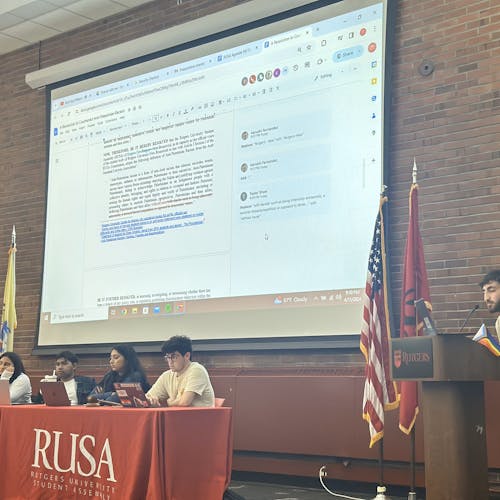MIT professor shares greenhouse gas findings at Rutgers seminar

The underlying nature of Jessika Trancik’s research could have a large impact in the worldwide scientific community, regarding the future of climate change initiatives, allowing for a more proper allocation of societal resources.
Research colleagues, professors and graduate students alike filed into the Marine Sciences Building on Cook Campus Friday morning to listen to Trancik, professor in Energy Studies in the Engineering Systems Division at the Massachusetts Institute of Technology.
“This is what we do as academics, and it’s great to meet with colleagues [and] discuss the research,” she said. “It’s good to get a different perspective to see what researchers, professors and students are working on here [at Rutgers].”
Trancik presented her research during her lecture, “Climate impacts of methane emitting energy technologies,” sponsored by the Rutgers Energy Institute. Her research compared the respective environmental impacts of carbon dioxide and methane and proposed a new means to measure greenhouse gas emissions.
Among the topics discussed was the Global Warming Potential, a metric commonly used to quantify natural gas leakages in the environment.
The purpose of discussing this metric was to acknowledge what Trancik called “the need for an interdisciplinary retrial,” or a new metric that can more accurately quantify natural gases, like carbon dioxide and methane, as the latter is a much more potent gas that has a greater initial impact.
Trancik said the inaccurate impact of methane from the GWP could greatly affect policy decisions.
“In making decisions about how to invest our research and development dollars and regulating emissions, it’s important to compare energy technologies and their emissions impacts to one another,” she said.
In order to more accurately account for methane emissions, Trancik and MIT doctoral student Morgan Edwards introduced two new metrics: the Instantaneous Climate Impact and Cumulative Climate Impact.
The need for dynamic metrics that are cumulative and instantaneous is precipitated from the knowledge that methane’s initial impact is extreme but eventually declines, while carbon dioxide’s is not significant initially, but becomes so over centuries.
“We proposed a new metric that is still very simple, but does a much better job in making the comparison between methane and carbon dioxide,” Trancik said. “They perform well despite limited information about the future.”
Robert Kopp, associate director of the Rutgers Energy Institute and associate professor in the School of Arts and Sciences, helped bring Trancik to Rutgers.
Trancik’s lecture was the first installment of the Institute’s Energy Policy Seminar Series this semester, Kopp said.
“Several times per term [the Rutgers Energy Institute tries] to bring outside speakers to campus that can talk to students and faculty about various topics concerning energy policy,” he said.
When asked about the political implications of Trancik’s research and the potential influence on policy-making, Kopp emphasized the greater importance of accurate information over any political agenda.
“This is a matter of quantitative analysis, not a matter of opinion,” he said. “It’s essentially a question of what’s the best modeling strategy to address greenhouse gas emissions, and we’re trying to spark some discussion about that.”
Although the nature of the event was entirely scientific and not political, one of the overarching themes of Trancik’s seminar was the relevance of her research findings to public policy and investment.
One of her lecture slides listed possible changes the ICI and CCI could induce in the Environmental Protection Agency’s regulations on power plants, the United States’ interagency methane strategy and mitigation potential of greenhouse gases by both the public and private sectors.
To reduce greenhouse gas emissions, the type of greenhouse gas must be called into question, said Frank Felder, director of the Center for Energy, Economic & Environmental Policy at the Edward J. Bloustein School of Planning and Public Policy.
“We need to define the problem properly, so we can go after the right gases in the most cost-effective ways,” he said.
Felder’s assertion is what Trancik described as “the applied impact” of her findings.
“A lot had been focused on carbon dioxide, as it is the most abundant greenhouse gas,” Felder said. “Its contribution to climate change is more on per-unit basis than methane, and we need to get them both right.”
Trancik’s development of the ICI and CCI metrics perhaps has greater potential than the GWP.
“I’m hoping to inform others on how to better understand how to include methane in emissions and what technologies we should invest in,” Trancik said. “This is important information that needs to be appropriately taken into account in the policy discussion regarding methane emissions.”



